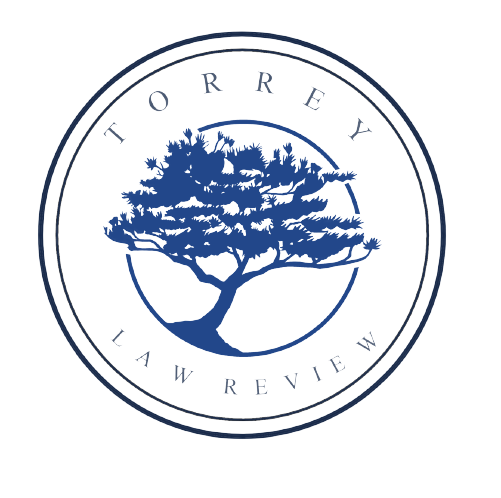Gonzales V. Oregon
Introduction:
Cases involving assisted suicide and its constitutionality have been brought to the supreme court many times. However. the Court has refused to find a constitutional right to physician-assisted suicide, leaving the matter up to state laws. One state authorization was the State of Oregon’s Death With Dignity Act of 1997. This act allowed terminally ill individuals to end their lives voluntarily and peacefully with the assistance of a licensed medical physician. Alberto R. Gonzales, the United States Attorney General, argued that using controlled substances to assist terminally ill patients in committing suicide was illegal under federal law. Gonzales v. Oregon, a 2006 Supreme Court decision, established the autonomy of states in making healthcare decisions.
The Facts:
In 2001, Attorney General John Ashcroft declared that physician-assisted suicide violated the Controlled Substances Act because prescribing controlled substances to assist suicide was not a "legitimate medical purpose." Ashcroft directed the DEA to revoke the medical licenses of physicians who prescribed, dispensed, or administered federally controlled substances to assist suicide. Ashcroft’s directive directly attacked Oregon’s Death With Dignity Act that the State of Oregon had passed.
Legal Background:
After Attorney General John Ashcroft issued his directive, the State of Oregon filed a lawsuit to challenge the federal government’s authority in the District of Oregon. The District Court ruled in the State of Oregon’s favor, concluding that the directive was invalid and unenforceable due to the 9th Circuit finding no clear statement of intent to alter the state-federal balance in the Interpretive Rule. The Court also found that the Controlled Substances Act didn’t allow the Attorney General to make decisions about medical policy. John Ashcroft appealed the decision to the United States Court of Appeals for the Ninth Circuit, which upheld the District Court’s decision. The Attorney General appealed again, this time to the Supreme court, asking them to revert the decisions made by the lower courts.
Holding:
The Supreme Court upheld the decisions made by the District Court and the United States Court of Appeals with a 6-3 decision. The Ashcroft Directive, according to the Court, went beyond the Attorney General’s powers under the Controlled Substances Act. The Court also ruled that the Ashcroft Directive conflicted with the State’s right to regulate medical practice. The Court used the case of Washington v. Glucksberg, where the court ruled that “the asserted ‘right’ to assistance in committing suicide is not a fundamental liberty interest protected by the Due Process Clause."
Justice Kennedy and the majority opinion found that the CSA did not authorize the Attorney General to make decisions surrounding medical policies and that the Attorney General’s directive was an Interpretive Rule that exceeded the scope of his authority under the Act.
Justice Kennedy wrote that the federal government could not use the Controlled Substances Act to interfere with the states’ authority to regulate the practice of medicine, including physician-assisted suicide unless Congress intended to do so. Therefore, the Court held that the Attorney General’s directive was invalid and unenforceable and that Oregon’s law was not preempted by federal law.
Justice Scalia, however, dissented, stating that “Even if that interpretation of the Regulation were incorrect, the Attorney General’s independent interpretation of the statutory phrase “public interest” in 21 U. S. C. §§824(a) and 823(f), and his implicit interpretation of the statutory phrase “public health and safety” in §823(f)(5), are entitled to deference under Chevron U. S. A. Inc. v. Natural Resources Defense Council, Inc., 467 U. S. 837 (1984)”
Legal Analysis:
The Supreme Court’s decision in Gonzales v. Oregon was commendable as it upheld the right of individuals to make choices about their medical treatment and, at the same time, respected the principles of federalism by allowing states to regulate medical practices within their borders. The Court recognized the right of individuals to make end-of-life decisions and the right of physicians to provide medical care at the patient’s request. In addition, the Court’s decision aligned with the general public's belief in end-of-life medical treatments. A survey by the Pew Research Center found that 84% of individuals support laws that give patients the right to decide whether they want to be kept alive through medical treatment. The court’s ruling upheld the principles of federalism by supporting the states’ authority to enact their laws while preventing federal overreach. Furthermore, the ruling recognized the importance of states’ rights when regulating medical practice. The Attorney General’s Directive would have been an example of the federal government controlling state’s rights. The decision in Gonzales v. Oregon verified that states are responsible for managing their medical practices within the lines of their border. Finally, the Court’s decision ruled that the federal government does not supersede the state’s legislation in this case. The Controlled Substance Act did not give the Attorney General the authority to replace Oregon state law, and his interpretation of the CSA was not entitled to deference.
In Gonzales v. Oregon, the issue of the right to die and the balance of federal and state authority was raised. The implications of the decision have proven pivotal precedents in future court cases. Since the Gonzalez vs. Oregon ruling, there have been no direct cases related to federal overreach of states' rights to permit assisted suicide; however, there was a dismissal of an appellate case brought to the Appellate Division of the Supreme Court of New York state. In that dismissal, the Appellate Court stated that “the right to aid-in-dying is best defined by the legislature, which is better equipped to develop appropriate safeguards than the judiciary.” Therefore the court is not completely opposed to the idea of providing medically assisted suicide in the state of New York. The procedure would be permissible only if the legislature establishes measures to ensure that the practice is performed in a safe and responsible manner.
